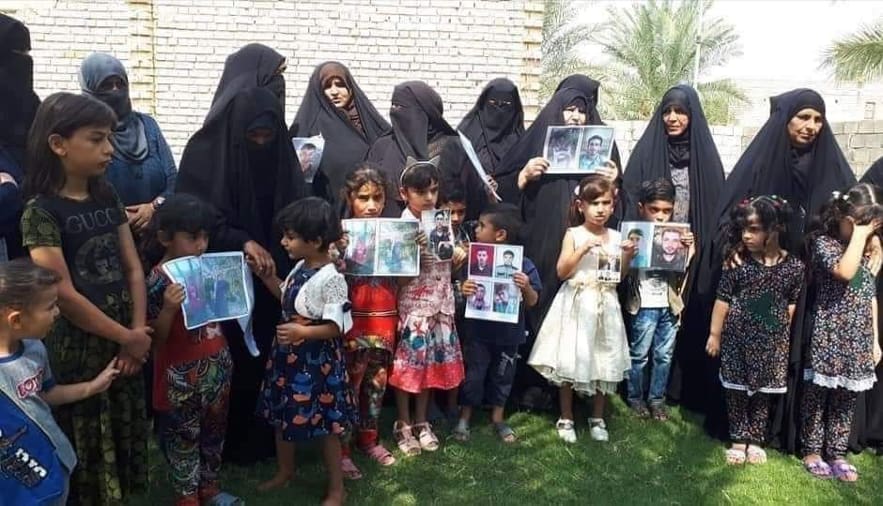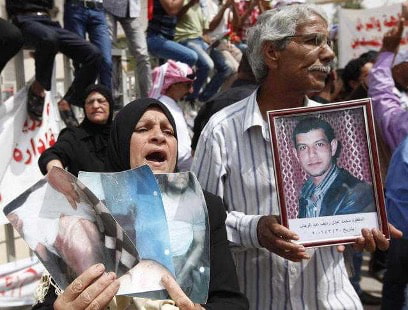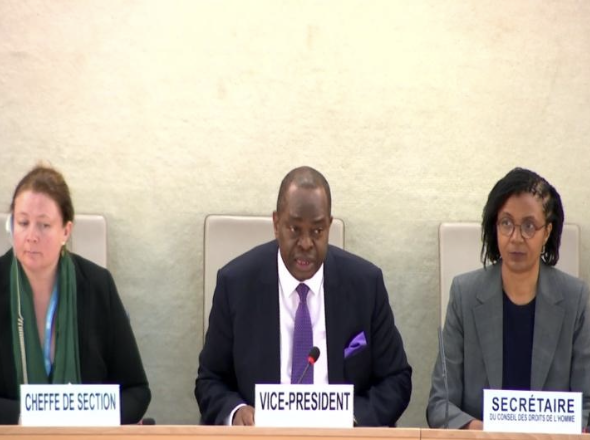In the eight years since one of the most devastating and egregious instances of mass disappearances, the families of the men and boys who fell victim to the Iraqi militia have had to grieve in silence while witnessing those responsible for the loss of their loved ones go unpunished. Throughout this period, the international community has seemingly demonstrated a complete lack of care and failed to take any meaningful action against the Iraqi government. Furthermore, it must be noted that Geneva International Centre for Justice (GICJ) has documented over sixteen thousand cases of forced disappearances across Iraq from 2014 to 2017.
While GICJ has documented over 1,000 people who were forcibly disappeared on the 5th of June 2016, the actual number is estimated to be higher. Though much of the truth remains buried, we choose to remember the inhuman events that happened on that day in Fallujah and the surrounding cities of Saqlawiyah and al-Azrakiya.
In June 2016, Iraqi military forces, alongside the US-led armed coalition, fought the Islamic State of Iraq and the Levant (ISIL) under the pretext of “liberating” the city of Fallujah. Amid the chaos, countless atrocities took place, many of which were direct results of the bombings and shellings by the so-called “liberation” forces. Civilians, attempting to flee the destruction caused by fighting, were subjected to abductions, during which they faced various atrocious human rights abuses and violations. On that same day, during the fighting in Saqlawiyah, a small city twenty kilometres west of Fallujah, over 3,000 civilians fled the fighting to the nearest military post, where they were corralled by the al-Hashd al-Shaabi militias into make-shift detention facilities. Those detained were subjected to appalling conditions, crammed into small, poorly ventilated rooms and denied basic necessities such as food and water. Complaints about their horrendous treatment were met with severe beatings and shootings, with witnesses recounting numerous deaths caused by indiscriminate killings and other forms of abuse and torture.
According to testimonies, civilians held in captivity were marched out in a row by gunmen wearing official police uniforms, despite belonging to the Badr Organization and Katai’b Hezbollah. A local CSO, who spoke to eyewitnesses, believes that around 300 were shot in this procession. Of the roughly 650 who were eventually released, many bore signs of torture, with 30% showing bodily evidence such as broken limbs or severe burns. The remaining 1,000 disappeared, and their whereabouts remain unknown.
 During this period, GICJ received documented information about the abduction of over 300 people from the village of al-Azrakiya. Approximately 150 of them were immediately killed, including an entire family of 35 members, while the rest were forcibly disappeared.
During this period, GICJ received documented information about the abduction of over 300 people from the village of al-Azrakiya. Approximately 150 of them were immediately killed, including an entire family of 35 members, while the rest were forcibly disappeared.
In the immediate aftermath, Ján Kubiš, former Special Representative of the UN Secretary-General and Head of the UN Assistance Mission for Iraq, acknowledged the disappearances of over seven-hundred Iraqi men and boys following the Fallujah military operations. He specified that the perpetrators belonged to the Popular Mobilization Forces and the Iraqi Security Forces. These disappearances were also acknowledged by the then High Commissioner for Human Rights, Zeid Ra’ad Al-Hussein, who expressed strong support for the establishment of an investigative committee and measures to locate the whereabouts of the missing persons.
Despite international recognition of these crimes, the Iraqi authorities have failed to acknowledge their responsibility and hold to account those responsible for perpetuating these atrocities. Over the last eight years, the families of the disappeared have been let down, promises of the successive governments were left unkept, and efforts to uncover the truth about the fate of the disappeared men have ultimately yielded no definitive answers.
The inaction of the authorities partly stems from their complicity. One of the most disturbing aspects of the Saqlawiyah episode was the apparent collaboration or acquiescence of the Iraqi regular armed forces with the militia, coupled with official attempts to downplay or deny their level of involvement.
While the perpetrators and their accomplices maintain control over the country’s economic and political powers, true transitional justice or accountability mechanisms remain elusive. Nonetheless, Iraq is still bound by clear and concrete legal obligations to take urgent and necessary steps to investigate disappearances. In its recent report (April 2023) following a country visit to Iraq, the Committee on Enforced Disappearances (CED) emphasised the need for Iraq to establish mechanisms to investigate all disappearances, regardless of when they occurred or who the alleged perpetrator may be. Despite this, the families of Saqlawiyah continue to wait for even the smallest semblance of justice.
Geneva International Centre for Justice (GICJ) recommends that the United Nations and its corresponding bodies initiate an investigation aimed at uncovering information about the whereabouts of those who have disappeared, and release this information to all states. Additionally, GICJ calls for:
- Taking all necessary measures to establish mechanisms to combat enforced disappearances in Iraq and hold all perpetrators accountable.
- Implementing systems to investigate incidents of enforced disappearances and locate missing persons.
- Commending the Committee on Enforced Disappearances (CED) for its work on forced disappearances in Iraq and urging the committee to continue its efforts to bring justice to the victims and their families.
GICJ also acknowledges all victims of enforced disappearances and shares the grief of families who have lost their loved ones and remain unaware of their whereabouts. Such atrocities often result from armed conflict and the absence of the rule of law, constituting serious violations of human rights and international laws.







